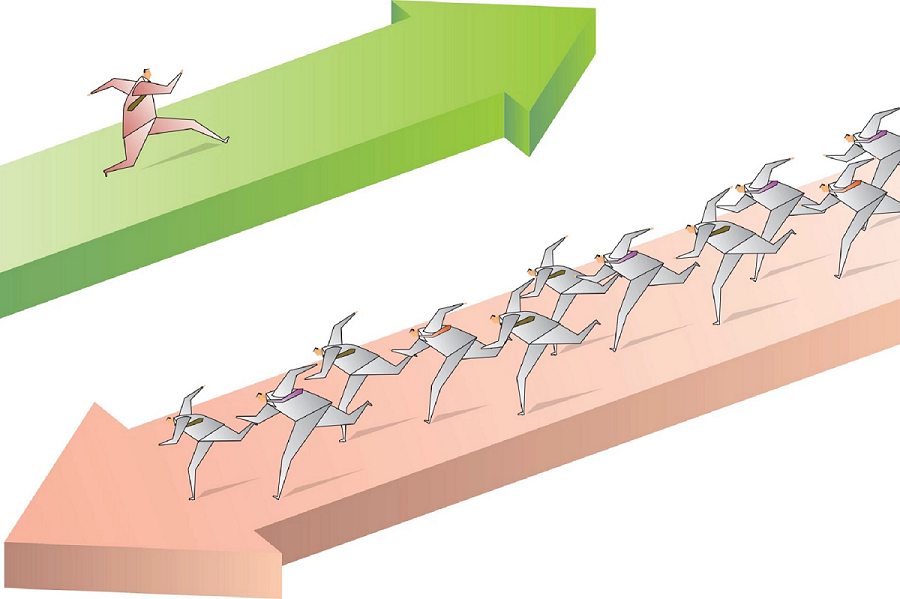Click here to read on The Chronicle of Philanthropy.
Giving was up 4.7 percent in the first three quarters of 2022, but the number of individual donors contributing was down 7.1 percent compared with 2021, according to new data from the Fundraising Effectiveness Project, which conducts research on fundraising effectiveness.
Administered jointly by the Association of Fundraising Professionals and GivingTuesday, the project releases data about charitable giving quarterly. It analyzes data from more than 8,000 organizations. The 2022 third quarter report, which covers January through September and compares it to the first three quarters of previous years, showed a continued trend of nonprofits getting more money from fewer donors.
“Every quarter we were seeing donor numbers down compared to the previous year,” says Woodrow Rosenbaum, chief data officer for GivingTuesday.
Repeat retained donors — those who had given in 2021 and 2022 but not for the first time — were down by only 2 percent. New donors and repeat retained donors make up 77.2 percent of all donors. The remaining share is split between newly retained donors (9.3 percent) and recaptured donors (13.5 percent) — those who did not give in 2021 but had given before and gave again in 2022.
The number of donors at every giving level dropped — but the bigger the gift, the less the decline. The largest drop — 13.2 percent — was in those who gave less than $100, and the smallest — 0.4 percent — was in those who gave more than $50,000.
Rosenbaum said FEP’s research shows organizations with a broad base of support that includes smaller donors are more resilient during economic downturns. So relying on big donors to provide most of the gifts could be problematic, especially with worries that a recession is looming.
“It is a bit concerning that we’re seeing the strong consolidation trend because it means we don’t have that foundation that is proven to provide resilience,” Rosenbaum says. “Right now, the prescription should be very broad engagement of many different donors, thinking about inviting grassroots givers in to support your organization, and re-engaging them frequently. This is not necessarily instead of large donor stewardship but as well as that.”
He says he understands some organizations may want to capitalize on large donors now, fearing they’ll be less generous if a recession hits, but notes it’s important to also focus on building the small donor base for future support.
Ben Miller, chair of the Fundraising Effective Project, echoed Rosenbaum’s advice to continue looking for broad support, particularly keeping new donors.
“On top of the large declines we are seeing with new donors, which are traditionally very difficult and costly to acquire, I imagine this spells trouble for a lot of organizations,” Miller says. “I would recommend that organizations not pull back on fundraising during the difficult times, as history has shown that to be a costly mistake. Nonprofits must continue to fundraise and acquire new donors to be able to sustain, and as long as that fundraising is authentic, compelling, and transparent there should be no shame in asking for money to do good.”
Year-End Expectations
The biggest giving season has traditionally been the fourth quarter, which includes GivingTuesday and year-end appeals. While FEP doesn’t have data for the year end yet, there are some clues as to what it could look like.
“Our first barometer on what year-end will look like is GivingTuesday, and from that perspective, it’s encouraging,” Rosenbaum says. “GivingTuesday saw an increase in both dollars and donors. Although donors grew on GivingTuesday, the donor pool did not grow as much as the dollars did. It’s not a contraction, but we are still trending toward consolidation.”
Another good sign, Rosenbaum says, is a growing tail for GivingTuesday donations. Typically, organizations experience a spike in giving for three days after GivingTuesday and then donations recede. This year, anecdotally, Rosenbaum is hearing donations spiked for more than three days.
“This is certainly far from what I would call an indicator because we don’t have clear data on it yet,” he says. “But, anecdotally, there are some encouraging signs there.”
Return to Insights & Events

